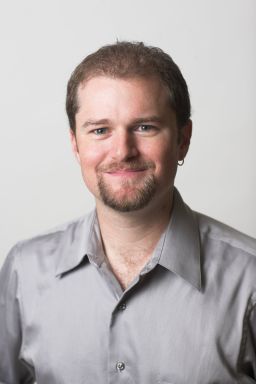Editor’s Note: David M. Perry is an associate professor of history at Dominican University in Illinois. He writes regularly at his blog: How Did We Get Into This Mess? Follow him on Twitter. The opinions expressed in this commentary are solely those of the author.
Story highlights
David M. Perry: The trauma goes beyond those killed and wounded
Perry says it affects disabled children, their families and all of us
The horror began late Wednesday morning in San Bernardino as at least two gun-wielding people stormed into a conference center at the Inland Regional Center, a state-funded nonprofit that works with the California Department of Developmental Services, and killed 14 people.

The killers fled, and two suspects have been killed, and so far we still can only speculate at their motives. Reports suggest the violence was focused on a holiday banquet celebrating county workers, with at least some suggesting it was a targeted killing, and police identified one of the attackers as Syed Rizwan Farook, an inspector for the county health department.
The shootings took place at a government center that provides services to adults and children with developmental disabilities. It’s an important facility, one of about 20 that serve tens of thousands of individuals throughout California. As reporters rushed to the scene, rumors flew that the killing involved disabled children, or a mental health patient, or a disgruntled parent, or any number of horror stories. The disability community braced, then felt a kind of guilty relief.
Complete coverage on the San Bernardino shooting
The killers, it seems, were not aiming at children with disabilities nor the people who provide them with services. But they hurt those children, their parents and caregivers, and the staff who have dedicated their lives to serving disabled Americans, nonetheless.
As the father of a child with Down syndrome, though not a Californian, I know these types of buildings well. I’ve spent so much of the last decade in and out of such offices, signing up for services, getting treatments and learning about the world of disability. While every mass shooting is horrific, the carnage can often feel remote, especially as Americans become inured to the regularity of the violence. There have, after all, been more mass shootings in 2015 than days in the year.
And yet, this time it was far too easy for me to imagine the terror of people with and without disabilities as the guns fired, the fire alarm sounded, and the sirens rang out. We’ll certainly start hearing stories about children and adults with disabilities as we begin to sort through the aftermath. I spoke with one parent in the area, Shannon Jenkins, who told me that her daughter, “receives services at Inland Regional Center. At any given time, there are hundreds there between employees, kids and adults with special needs, and their parents/(caregivers).” On a crowded Wednesday afternoon, we’re lucky the body count wasn’t worse.
But the survivors don’t escape unscathed. Some of the children and adults with developmental disabilities experienced the trauma of being present at a mass shooting. My son, as is relatively common, reacts with real panic to certain kinds of sounds and lights, including close proximity to alarm.
What kind of trauma will disabled children carry forward from this event? And, of course, disabled children are not the only ones at risk for trauma and its consequences. Post-traumatic stress disorder is one of the most common forms of disability in America, a condition for which everyone involved is now at risk.
How to talk to kids about tragic events
The social media feeds of the Inland Regional Center are filled with pictures of joy and friendship. A Christmas party with a child sitting on Santa’s lap. People dancing and singing to “Celebration.” Signs for the upcoming winter dance on Friday, perhaps intended to be held in the very hall now riddled with bullets and blood. This was a place that was doing the hard work of building an inclusive community.
Worst of all, there continues to be no reason to think that any degree of horror will spur cultural or policy change when it comes to the easy access to firearms in America. The empathy I felt for the people at a disability services building made the violence more real to me. But I’ve felt this degree of empathy before. When Adam Lanza killed all those first-graders on December 14, 2012, I thought about my own son, then a 5-year-old, and imagined him experiencing the horror of a shooter in his school. Surely every parent in America had such thoughts as they sent their children off to school in the following days, and perhaps every day since.
And yet, we’ve done nothing. The pace of mass shootings is accelerating. Thanks to the power of the gun lobby and their cronies in Congress, all we do is offer empty thoughts and prayers, while we slowly become more and more afraid.
Join us on Facebook.com/CNNOpinion.
Read CNNOpinion’s Flipboard magazine.































